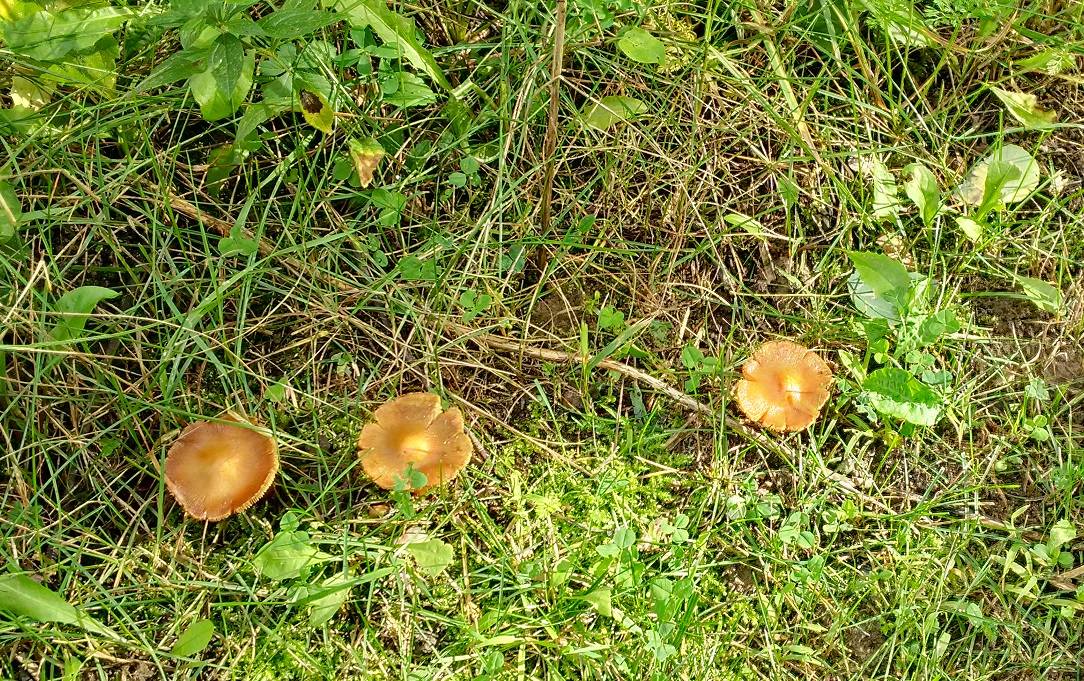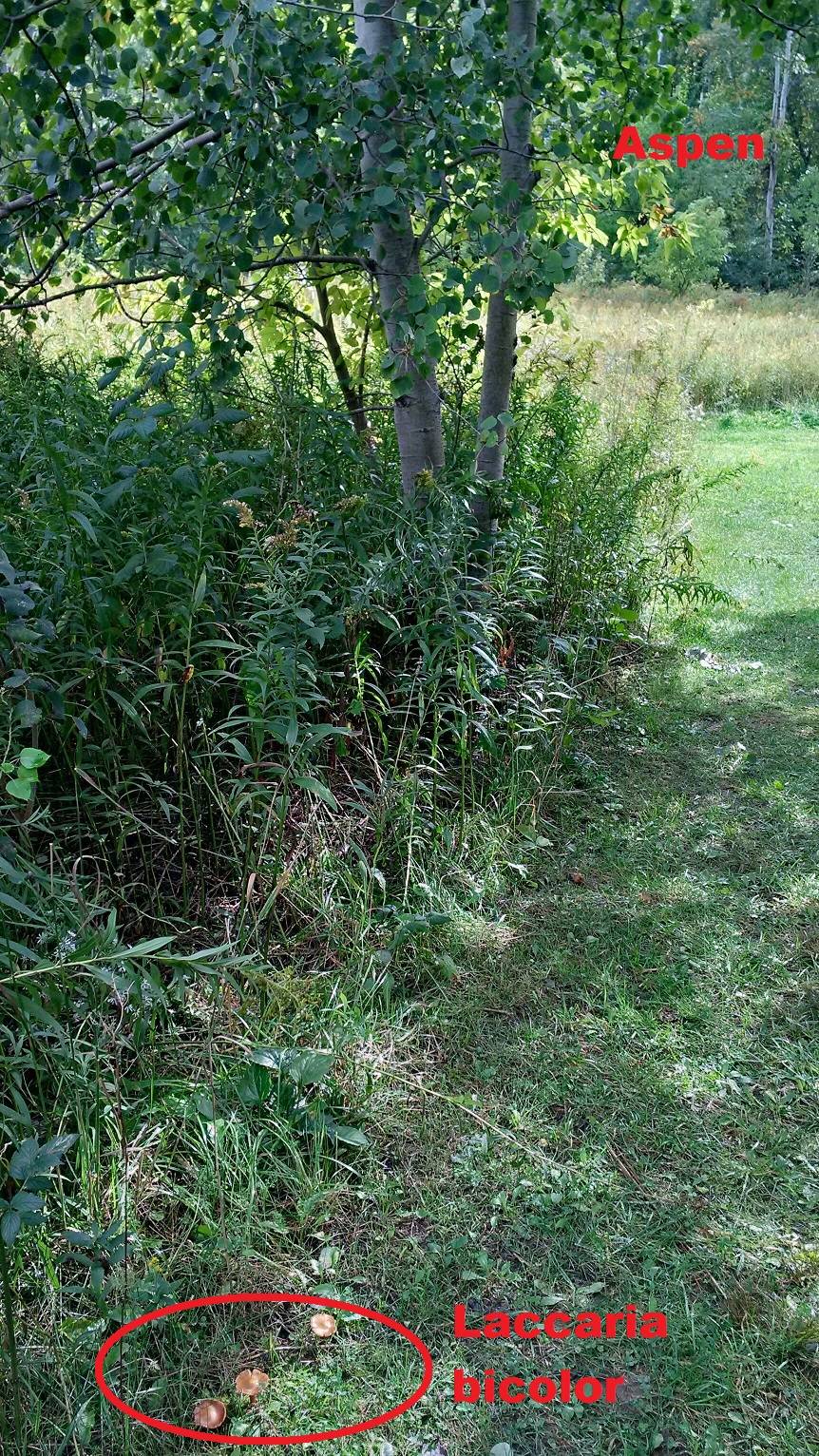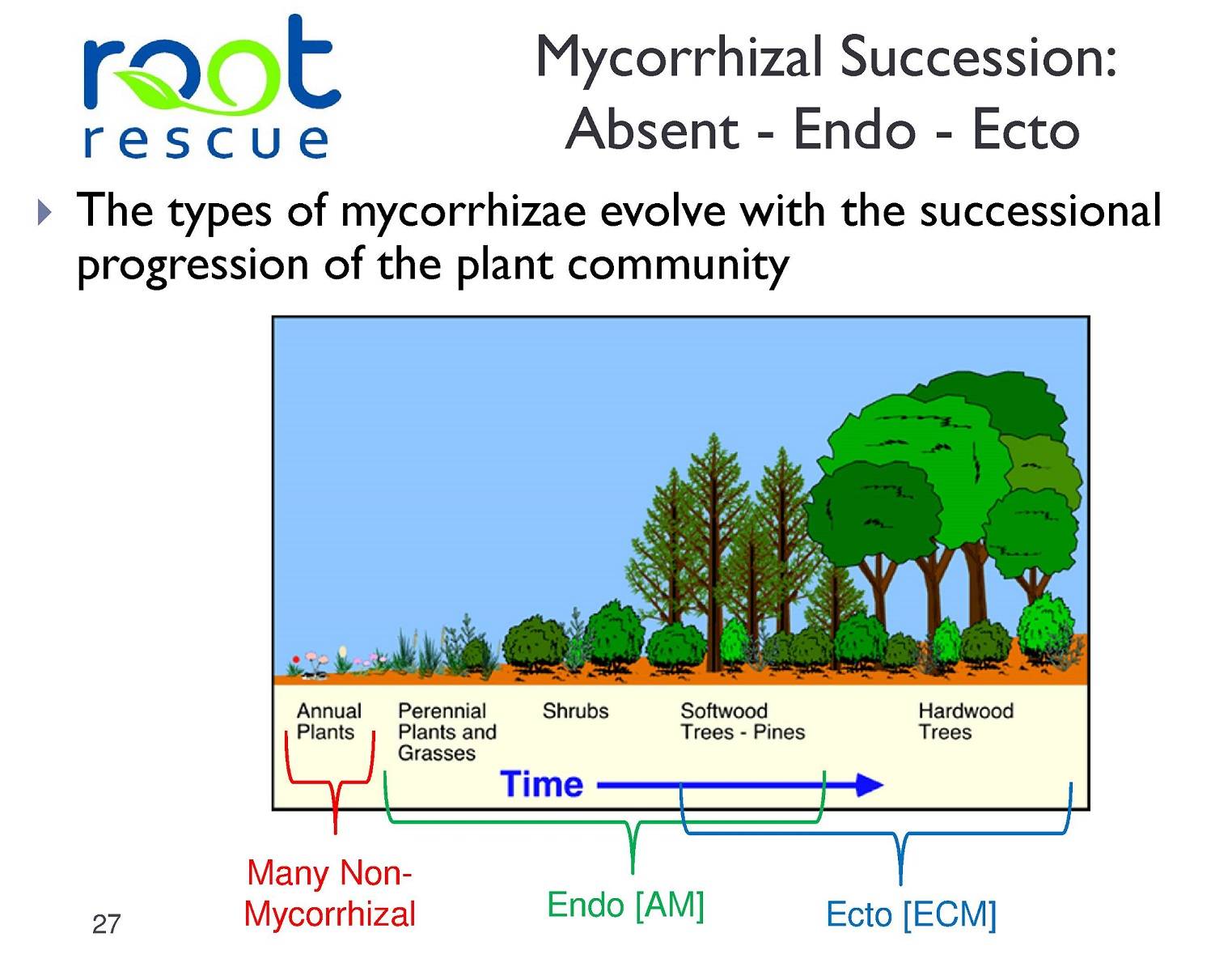This unassuming little mushroom (Laccaria bicolor - the Bicolor Deceiver) pops up briefly in the fall. Its appearance means that the nearby Aspen trees have changed their mycorrhizal partners.


Laccaria pop-up in the Fall under Aspens (Poplars) - but not under sapling trees...

We were out walking our dogs in a local wetland park near our home on the weekend when I noticed these little guys at the edge of a clearing. This section of the park was once cropland, and over the last 25 years or so, it's being slowly reclaimed by an adjacent wooded area. Laccaria bicolor are an ectomycorrhizal partner of a number of hardwood deciduous trees and conifers, and these mushroom caps appear briefly in the fall as part of their reproductive cycle. In this case, the nearby host trees are a combination of Aspen (Poplar) and Birch trees. Poplar is a very interesting species because as young saplings they are endomycorrhizal plants - and will form a symbiotic partnerships with the AM fungi associated with the roots of (perhaps) the grasses in the former farm field. This may be part of the reason why Poplars are a pioneering species in the plant succession process that will ultimately see this grassy meadow turn into a forest one day. Seeing these Laccaria bicolor mushrooms means that these Aspens have matured to the point where they have become partners with ectomycorrhizal (ECM) fungi. This is highly unusual - most plants will partner with either AM or ECM fungi; it's rare to see an plant change mycorrhizal partners in this way. But given the important role that members of the Poplar family plays in helping soils recover from disturbance - it makes complete sense.
Poplars are pioneers in the plant succession process - and mycorrhizae help them through the transition from field to forest

First the Poplars will appear among the grasses in the abandoned field, and years later when the Poplar trees mature, the ectomycorrhizal trees will begin to appear. Birch (perhaps with their frequent partners Beech), and ultimately conifers like Pine, Spruce, Larch and Fir follow the lead of the Poplar pioneers. And so, below the grade the mycorrhizal community helps this abandoned farmland return to a woodland. Over time, the ECM fungi (that support climax succession hardwood trees and conifers) become dense contiguous mycelial networks in the forest soils.
